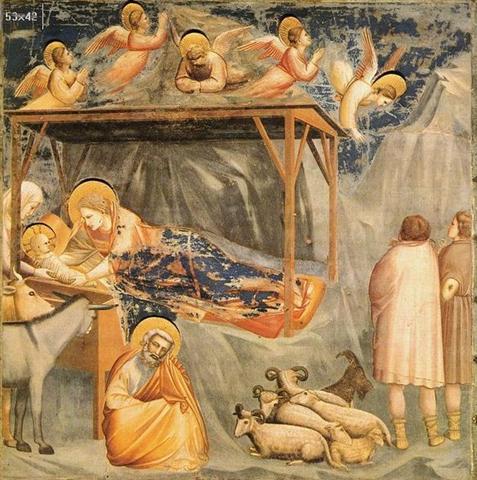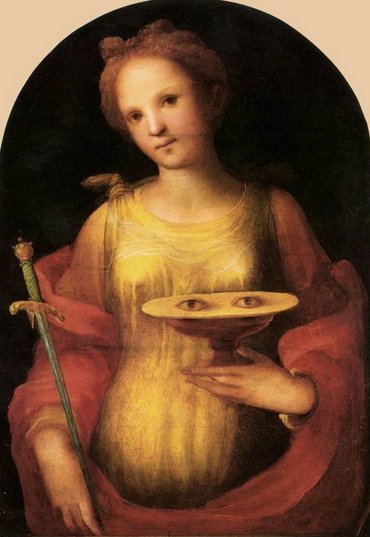The Polynesians seem to have been quite interested in how their small island worlds were created, as if miraculously brought up like fishes from the vast sea, - as interested in this mystery as in how light and warmth (together with the Sun Bird) each year was brought down from high up in the northeast. They lived in the tropical belt and did not suffer very much from cold and darkness. ... This act of Maui's, that gave our people the land on which we live, was an event next in greatness to the separation of the Sky and Earth ... Blood Moon ought to have represented the Harvest season, the western region of the Earth Turtle. ... The 'harvest moon' is the full moon closest to the autumnal equinox (22 or 23 September) ...
... 'My child', said Makea now in a tone of deep sorrow, 'there has been a bad omen for us. When I performed the tohi [cfr Tohil who had the Fire] ceremony over you I missed out a part of the prayers. I remembered it too late.
I am afraid this means that you are going to die.' 'What's she like, Hine nui te Po?' asked Maui. 'Look over there', said Makea, pointing to the ice-cold mountains beneath the flaming clouds of sunset. 'What you see there is Hine nui, flashing where the sky meets the earth. Her body is like a woman's, but the pupils of her eyes are greenstone and her hair is kelp. Her mouth is that of a barracuda, and in the place where men enter her she has sharp teeth of obsidian and greenstone.' After death came rebirth, when the Harvest Basket was reused as a cradle. ... the Delphians worshipped Dionysus once a year as the new-born child, Liknites, 'the Child in the Harvest Basket', which was a shovel-shaped basket of rush and osier used as a harvest basket, a cradle, a manger, and a winnowing-fan for tossing the grain up into the air against the wind, to separate it from the chaff ... ... The bereaved and sorrowing Isis, meanwhile, wandering over the world in her quest - like Demeter in search of the lost Persephone - came to Byblos, where she learned of the wonderful tree. And, placing herself by a well of the city, in mourning, veiled and in humble guise - again like Demeter - she spoke to none until there approached the well the handmaidens of the queen, whom she greeted kindly. Braiding their hair, she breathed upon them such a wondrous perfume that when they returned and Astarte saw and smelt the braids she sent for the stranger, took her into the house, and made her the nurse of her child. The great goddess gave the infant her finger instead of breast to suck and at night, having placed him in a fire to burn away all that was mortal, flew in the form of a swallow around the pillar, mournfully chirping. But the child's mother, Queen Astarte, happening in upon this scene, shrieked when she spied her little son resting in the flames and thereby deprived him of the priceless boon. Whereupon Isis, revealing her true nature, begged for the pillar and, removing the sarcophagus, fell upon it with a cry of grief so loud that the queen's child died on the spot ... ... A connection between the new year and the harvesting of crops reminiscent of an earlier period when the evening appearance of the Pleiades in the east more nearly coincided with the arrival of the Sun at the autumnal equinox is seen in the prolonged Hawaiian ceremonies ushering in the new year. But in the month September-October, while the old year still had two months to run, announcement was made to the people by placing a certain signal outside the temple walls that the new year had begun ... Since the time of Menkaure precession had moved the seasons. Menkaure lived around 2500 BC (i.e., at the same time as when the great stone pillars of Stonehenge were raised) and since then Nash (the time dial point of the Archer) had moved ahead with ca 61 precessional days. Therefore there were still around 2 months remaining to the winnowing cradle.
At the time of Aldebaran *OCTOBER 12 would have been day 285 and at the time of Gregory XIII day 285 counted from 0h was °December 30 (364):
... At this time of the year we have special buns, yellow from saffron and formed like a pair of interconnected curves. In another picture is illustrated how in Sweden December 13 is celebrated with candles and singing:
Obviously this time of the year once must have been a kind of 'candlemas'. Precession makes the dates of celebration move earlier and earlier, and according to the Julian calendar December 13 was the darkest day in the year. Thus the day of Lucia (who has a crown of candles in her hair) is expressing the same idea as Candlemas. No wonder people in the street here in Sweden had no explanation for Kyndelsmäss - in Sweden the candles are instead kindled 12 days before Christmas Day ...
Menkaure had been preceded by his father and his uncle and they together had ruled for 2 * 150 = 300 days (or 'years') of misery: ... Menkaure was allegedly a much more benevolent Pharaoh than his predecessors. According to legends related by Herodotus, he wrote the following: This Prince (Mycerinus) disapproved of the conduct of his father, reopened the temples and allowed the people, who were ground down to the lowest point of misery, to return to their occupations and to resume the practice of sacrifice. His justice in the decision of causes was beyond that of all the former kings. The Egyptians praise him in this respect more highly than any other monarchs, declaring that he not only gave his judgements with fairness, but also, when anyone was dissatisfied with his sentence, made compensation to him out of his own purse and thus pacified his anger. The Gods however ordained that Egypt should suffer tyrannical rulers for a hundred and fifty years according to this legend. Herodotus goes on: An oracle reached him from the town of Buto, which said 'six years only shalt thou live upon this earth, and in the seventh thou shalt end thy days'. Mycerinus, indignant, sent an angry message to the oracle, reproaching the god with his injustice - 'My father and uncle,' he said 'though they shut up the temples, took no thought of the gods and destroyed multitudes of men, nevertheless enjoyed a long life; I, who am pious, am to die soon!' There came in reply a second message from the oracle - 'for this very reason is thy life brought so quickly to a close - thou hast not done as it behoved thee. Egypt was fated to suffer affliction one hundred and fifty years - the two kings who preceded thee upon the throne understood this - thou hast not understood it'. Mycerinus, when this answer reached him, perceiving that his doom was fixed, had lamps prepared, which he lighted every day at eventime, and feasted and enjoyed himself unceasingly both day and night, moving about in the marsh-country and the woods, and visiting all the places he heard were agreeable sojourns. His wish was to prove the oracle false, by turning night into days and so living twelve years in the space of six ... In Roman times the last day of the year was known as Terminalia = 'February 23: ... The leap day was introduced as part of the Julian reform. The day following the Terminalia (February 23) was doubled, forming the 'bis sextum - literally 'double sixth', since February 24 was 'the sixth day before the Kalends of March' using Roman inclusive counting (March 1 was the 'first day'). Although exceptions exist, the first day of the bis sextum (February 24) was usually regarded as the intercalated or 'bissextile' day since the third century. February 29 came to be regarded as the leap day when the Roman system of numbering days was replaced by sequential numbering in the late Middle Ages ... Day 54 ('February 23) could have been regarded as corresponding to (≈) the last day before the solstice. 'December 20 = 354 = 12 * 29½ = 'February 23 (420 = 7 * 60 = 6 * 70). In the Mayan structure there was a Skeleton Tree where the Sun was sinking down in the Kankin month - which was ending with day 280, or 120 days after the Sun had been in full view in the 8th month Mol, which preceded 80 days with rainclouds:
... Six glyphs at least are clearly pictographic in base: Pop, mat; Zotz, bat; Xul, ?; Kankin, skeleton ribs; Moan, falcon; Kayab, turtle ... ... God created Eve from one of Adam's ribs and therefore I have dared to translate the female (β) star Al Sharas with The Rib. Although according to Allen this star was plural: '... β ... was one of Al Tizini's Al Sharāsīf, the Ribs, - i.e. of the Hydra, - and the first of the set.' Adam had, as I remember it, another wife before Eve, viz. Lilith ... Mol was probably ending with day 160 because this was day 172 (corresponding to June 21) counted from December 20 (354). 366 - 354 = 12 and 160 + 12 = 172. Thus the month of Jupiter was evidently beginning 171 (= 9 * 19) calendar days counted from the winter solstice (December 21). ... Midsummer is the flowering season of the oak, which is the tree of endurance and triumph, and like the ash is said to 'court the lightning flash'. Its roots are believed to extend as deep underground as its branches rise in the air - Virgil mentions this - which makes it emblematic of a god whose law runs both in Heaven and in the Underworld ... The month, which takes its name from Juppiter the oak-god, begins on June 10th and ends of July 7th. Midway comes St. John's Day, June 24th, the day on which the oak-king was sacrificially burned alive. The Celtic year was divided into two halves with the second half beginning in July, apparently after a seven-day wake, or funeral feast, in the oak-king's honour ...
|
|||||||||||||||||||||||||||||||||||||||||||||||||||||||||||||||||||||||||||||||||||||||||||||||||||||||||||||||||||||||||||||||||||||||||||||




























